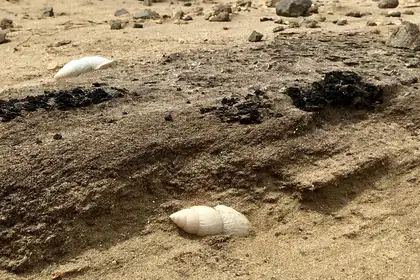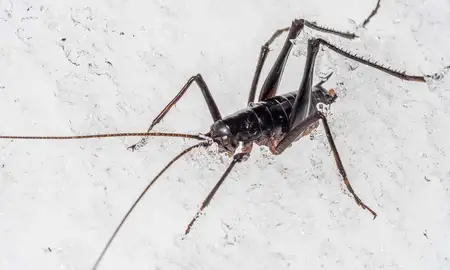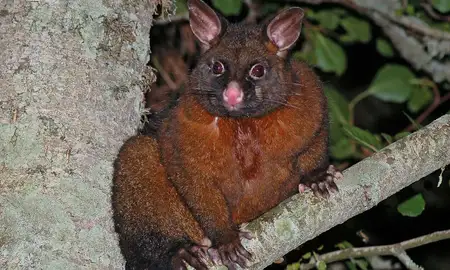
Pūpū whakarongotaua fossil shells in Te Werahi, Far North. Photo credit: Andrew Lorrey, NIWA.
The research, recently published in the Journal of Quaternary Science, provides baseline data for using the shells of Placostylus snails as environmental proxies, allowing us to use fossil shells to estimate the temperature and rainfall when the snails were alive.
Scientists from Massey University, the National Institute of Water and Atmospheric Research (NIWA) and the University of Adelaide sliced up shells of three species of giant land snail (pūpū whakarongotaua; Placostylus) for the study.
The samples from New Caledonia showed drops in isotopic values in their high‐resolution profiles, probably linked to periods of intense rainfall. Very heavy rainfall events produce lower stable oxygen isotope ratios incorporated into the shells of the living-growing land snails.
In contrast, the snails from Aotearoa New Zealand varied very little, suggesting that when they were alive 74 years ago, there were few heavy rain events in the Far North of New Zealand.
Study co-author Professor Mary Morgan-Richards from the School of Natural Sciences says it’s exciting to think of all the information locked up in snail shells.
“The shape of the shell, the DNA and the isotopes can all tell a story about the past. As Placostylus snails are slow growing, taking 10 years to reach maturity, and live for a long time, they can each tell their own story. There is much to be learnt by digging into old shells to reveal the frequency of heavy rainfall events in the past.
“Most interesting are the dramatic drops in oxygen isotope ratios that seem to correspond to heavy rainfall, suggesting an opportunity to dig into the past to compare past precipitation with current frequency of wet weather events in New Zealand. There is also the potential to study the frequency of droughts from the pattern of snail shell growth,” she explains.
The snails (pūpū whakarongotaua; Placostylus) are taonga of Ngāti Kurī, who value them as security alarms (the snail that listens for war parties). Ngāti Kurī are working to save the local species from extinction, but are also kaitiaki (guardians) of fossil shells buried in the sand dunes and stored in museums. These fossil deposits could provide information about the past climate through high‐resolution stable oxygen isotope profiles.
Professor Morgan-Richards says further work will be needed to establish the effect of heavy rain in each region, and calibrate growth rate of snail shells, before the frequency of heavy rainfall events in New Zealand in the past and how fast our climate is changing can be known.
Related news
Researchers discover six new species of New Zealand wētā
Six new species and three new subspecies of alpine cave wētā from the southern regions of the South Island have been identified.

Brushing up on possums
A Massey University study has investigated the unrestricted gene flow between two subspecies of translocated brushtail possums in Aotearoa New Zealand. The findings are significant to New Zealand's goal of being predator free by 2050.

The secret sex lives of stick insects
Massey University researchers have discovered more about the sexual lives of stick insects in New Zealand and the United Kingdom.
